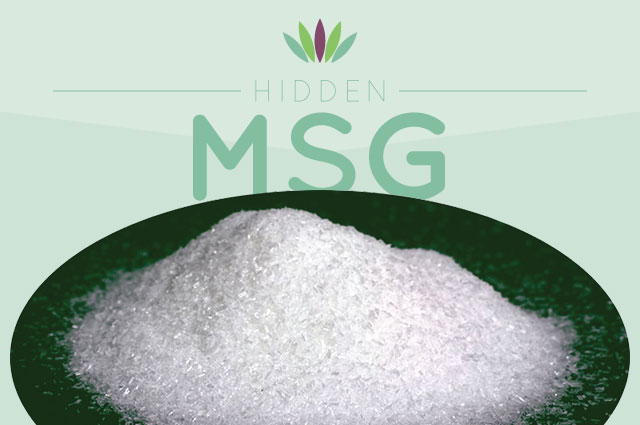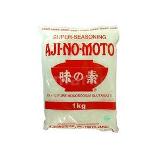
Before getting into this I would like to call something to your attention. If you are plagued by any of the following, you could be suffering from an MSG reaction.
Severe headaches; nausea, diarrhea, vomiting; irregular heart beat or blood pressure; depression or mood change; abdominal pain, cramps or bloating; balance problems, dizziness or seizures; tenderness in localized areas, like the neck, back, legs, etc.; sleep disorders; blurred vision or difficulty focusing; chronic fatigue or sleepiness; excessive perspiring or chills; shortness of breath, chest pains, asthma; swelling or numbness of hands, feet or jaw; pain in joints or bones; flushing or tingling in face, chest, pressure behind eyes; gagging reflex or difficulty swallowing; hyperactivity, behavioral problems; chronic post nasal drip; skin rash, itching, hives; bloated face, dark circles under strained eyes; extreme thirst or dry mouth; difficulty concentrating and poor memory; slowed speech; chronic bronchitis-like symptoms, allergy reactions, dry cough, hoarseness, or sore throat; heavy, weak feeling in arms or legs.
Glutamic acid is just one of many amino acids that are the building blocks of proteins. It occurs naturally in many foods such as tomatoes, milk, and mushrooms. It is also found in the cells of our bodies, including mother’s milk, and involves a wide variety of brain functions since it acts as a neurotransmitter.
This natural glutamate in plants and animals is known as L-glutamic acid. When the term glutamate is used versus glutamic acid, it only means that the 
glutamic acid is bound to other amino acids or substances, such as salt.
When the linkages are broken, then it is referred to as processed or free glutamic acid or free glutamate or MSG.
Our normal digestive process slowly breaks down this natural or “bound” glutamic acid and it is then delivered to glutamate receptors in our body and brain. Broken down this natural way, it is harmless.
In a factory, the bound glutamic acid in certain foods like corn, molasses or wheat is broken down or made “free” by various processes (hydrolyzed, autolyzed, modified, or fermented with strong chemicals, bacteria, or enzymes) and refined to a white crystal that resembles sugar.
The major process today involves a fermentation process in which bacteria excrete free glutamate from the corn (GMO) substance they are mixed with. It is then mixed with salt. Hello MSG, and hello high blood pressure.
This product is 78.2 percent free glutamate, 12.2 percent sodium, and 9.6 percent water. It is odorless and has no distinct flavor. Its chemical formulation has been modified and it is technically known as D-glutamic acid. This factory made concoction causes sensitive individuals more serious reactions than any other form of glutamic acid, and oh yeah, there is no D-glutamic acid found anywhere in nature.
We get far too much MSG in the growing number of processed foods that we have come to rely on. When MSG is in its pure concentrated form, it MUST be labeled MSG. But since this free glutamate can be a component part of certain food additives, such as autolyzed yeast, yeast extract, torula yeast, or proteins that are hydrolyzed or modified, the Fraud and Drug Administration allows it to go into food unlabeled as MSG. Because of all these euphemisms, it makes it very difficult for consumers who are trying to avoid it.
Bear in mind that despite severe reactions to this crap that manifests, the food manufacturers only value MSG’s ability to give a flavorless food a flavor and make them big profits.
Kombu, dried seaweed, has been used for thousands of years as a natural flavoring. Today, MSG is made from mostly GMO corn and wheat. Strong acids, alkalis, enzymes, bacteria and heat are used to hydrolyze animal, vegetable, or milk products, also producing food additives rich in MSG.
Calcium and sodium caseinate are products of hydrolyzed milk protein. Maltoidextrin comes from processed GMO corn and although corn syrup (high fructose), and cornstarch are not as highly processed as maltodextrin is, they are still MSG.
Yeast extract, torula yeast or autolyzed yeast is made by chemically processing natural yeast in a method similar to hydrolyzing.
Barley malt and malt extract contain MSG because of an enzyme reaction used to produce them.
Whey protein concentrate or protein isolate contain MSG if hydrolyzed milk proteins are present or added.
Soy protein isolate or soy protein, which are largely GMOs, is processed for soybeans and often a component of textured protein.
Most smoke flavor or flavorings use hydrolyzed protein to intensify flavor.
Some other MSG containing products include gelatins, which are highly processed by-products of animal protein and non-organic soy sauce.
Despite carrageenan being a type of seaweed, it can contain MSG depending upon the manufacturer using hydrolyzed milk protein or not.
Most people think MSG is a food preservative.
All MSG does is to make a flavorless food taste better. It stimulates the taste buds and eventually the brain receptors into perceiving salt and sweet sensations instead of bitter and sour ones.
Unfortunately, a substance that stimulates brain-cell activity is a neurotransmitter and can actually burn the brain-cells out leading to Alzheimer’s, Parkinson’s and fibromyalgia.
Okay, we know the effect that MSG has on the brain cells, but why would there be adverse conditions like joint pain, stomach problems and vision problems?
It is because the “free” glutamate, not being “bound” to other amino acids, is rapidly absorbed into our system with the amount of glutamic acid absorbed being eight to ten times more than the normal amount.
It is this “freed-up” form that acts as a powerful drug affecting not only the brain cells, but also intestinal muscles, blood vessels, and any system the blood carries it to.
Bear in mind, if it is still intact, that the brain controls every vital function in the body. When MSG reaches the brain and the organs it controls, it can affect normal breathing, nerves, heart rhythm, and hormone secretion. If it settles in the joints – gout, arthritis, or tendinitis-like symptoms manifest.
Hydrolyzed vegetable protein, which is about 40 percent MSG, is made by boiling certain vegetables for hours in vats of water and sulfuric or other acids and then neutralized with caustic soda.
Then it’s dried to form a powder, which is high in MSG, aspartate and cysteic acid – excitotoxins. It also contains known carcinogens. When complete, the product is shipped to food companies where it’s added to flavorless foods, including baby food.
There are no current limits on the amount of MSG that can be added to a food product and there is no way to know the amount that is consumed on a daily basis. Since it is added as a component of other ingredients, it is not recognizable or labeled as MSG and therefore hidden from view.
Since the 1940s, the amount of MSG added to our processed foods has doubled each decade. Where it used to take 16 chickens to make a vat of commercial chicken soup, it now takes a couple of chickens and lots of MSG.
What to do? What to do?
It’s not rocket science you know. If man made it, don’t eat it. It it’s not organic, don’t eat it. If it comes in a can, don’t eat it. And, if it had a face or a mother, don’t eat it, unless you really have an acquired taste for GMOs, road kill, excessive hormones and antibiotics, mercury and other toxic wastes, and doo doo laced poultry.
Disclaimer: This website is for information purposes only. By providing the information contained herein we are not diagnosing, treating, curing, mitigating, or preventing any type of disease or medical condition. Before beginning any type of natural, integrative or conventional treatment regime, it is advisible to seek the advice of a licensed healthcare professional.
![]()







